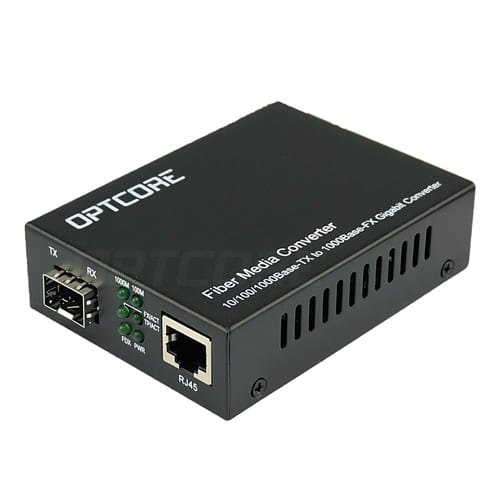
According to the daily maintenance and the problems that the users have summed up, I hope to bring some help to the maintenance staff, to determine the cause according to the fault phenomenon, to find the fault point, “the right medicine.”
1. What kind of connection is used when the transceiver RJ45 port is connected to other devices?
Cause: The RJ45 port of the transceiver is connected to the PC network card (DTE data terminal equipment) using a crossover twisted pair, and the HUB or SWITCH (DCE data communication equipment) uses parallel lines.
2. What is the reason why the TxLink light is not lit?
answer:
1, wrong twisted pair
2, the twisted pair crystal head is in poor contact with the equipment, or the quality of the twisted pair itself
3, the device is not connected
3. What is the reason why the TxLink lamp does not flash but is always on after the fiber is normally connected?
the reason:
1. The fault is generally caused by the transmission distance being too long;
2, compatibility issues with the network card (connected to the PC)
4. What is the reason why the Fxlink light does not illuminate?
the reason:
1. The fiber optic cable is connected incorrectly, and the correct connection method is TX-RX, RX-TX or fiber mode is wrong;
2. The transmission distance is too long or the intermediate loss is too large, exceeding the nominal loss of the product. The solution is to take measures to reduce the intermediate loss or replace it with a transmission distance longer.
3. The operating temperature of the fiber optic transceiver is too high.
5. What is the reason why the Fxlink light does not flash but is always bright after the fiber is connected normally?
Cause: The fault is generally caused by the transmission distance being too long or the intermediate loss is too large, exceeding the nominal loss of the product. The solution is to minimize the intermediate loss or replace it with a transceiver with a longer transmission distance.
6. What should I do if the five lights are all on or the indicator is normal but not transferable?
Reason: Generally, the power is turned off and restarted.
7. What is the ambient temperature of the transceiver?
Cause: The fiber optic module is greatly affected by the ambient temperature. Although it has its own built-in automatic gain circuit after the temperature exceeds a certain range, the optical power of the optical module is affected and decreased, which weakens the quality of the optical network signal and causes packet loss. The rate rises and even disconnects the optical link; (typical fiber optic modules can reach 70°C)
8. What is the compatibility with the external device protocol?
the reason:
Like the 10/100M switch, the 10/100M optical transceiver has a certain limit on the frame length, generally not exceeding 1522B or 1536B. When the switch connected at the central office supports some special protocols (such as Ciss ISL), The packet overhead is increased (the packet cost of the ISL of the Ciss is 30 Bytes), which is exceeded by the upper limit of the frame length of the optical transceiver. This indicates that the packet loss rate is high or not. In this case, the MTU of the terminal device needs to be adjusted. The overhead of the general IP packet is 18 bytes, and the MTU is 1500 bytes. Currently, the high-end communication equipment manufacturer has an internal network protocol, which generally adopts a separate packet method, which will increase the overhead of the IP packet. If the data is 1500 bytes, IP. After the packet, the size of the IP packet will exceed 18 and be discarded), so that the size of the packet transmitted on the line is satisfactory to the network device’s limitation on the frame length.
9. After the chassis has been working normally for a while, why is it that some cards are not working properly?
the reason:
Early chassis power supplies used relays. Insufficient power supply margin and large line loss are major problems. After the chassis works normally for a period of time, some cards may not work properly. When some cards are pulled out, the remaining cards work normally. After the long-term operation of the chassis, the connector oxidation causes a large joint loss. This power supply falls beyond the regulations. The required range may cause the chassis card to be abnormal. The power supply switching of the chassis is protected by a high-power Schottky diode to improve the form of the connector and reduce the power drop caused by the control circuit and the connector. At the same time, the power redundancy of the power supply is increased, which makes the backup power supply convenient and safe, and makes it more suitable for the long-term uninterrupted work.
10. What function does the link alarm provide on the transceiver?
Cause: The transceiver has a linked alarm function (linkless). When a certain fiber is dropped, it will be automatically fed back to the electrical port (that is, the indicator on the electrical port will also be extinguished). If the switch has network management, it will be reflected in the switch immediately. Network management software.
Disclaimer: All information indicated as other sources is transferred from other platforms, the purpose is to convey more information, does not represent the views and positions of this site. Please contact us if there is any infringement or objection.
You should take part in a contest for one of the finest sites on the internet. I’m going to highly recommend this website!|
Thank you very much for your support.